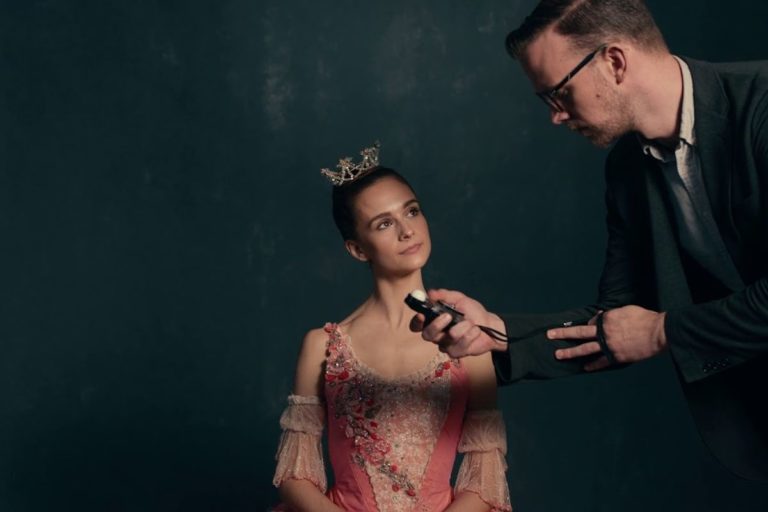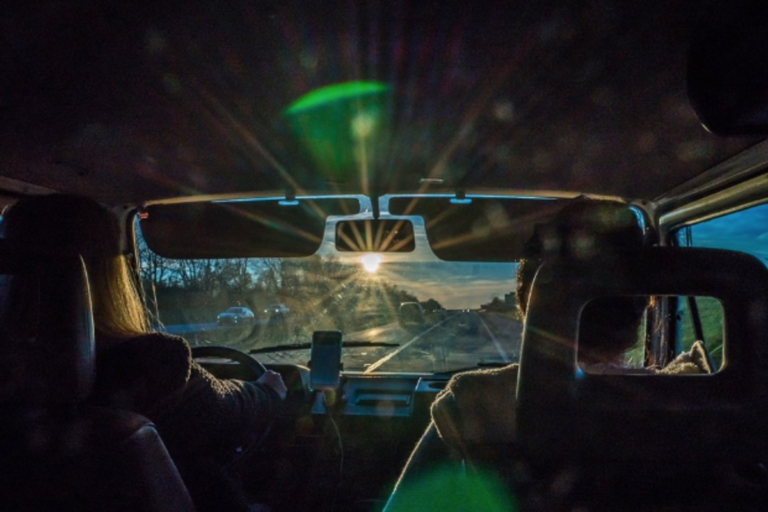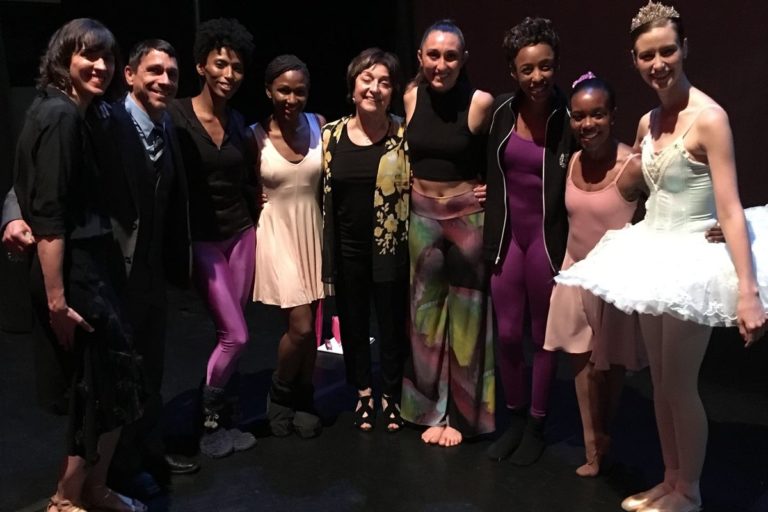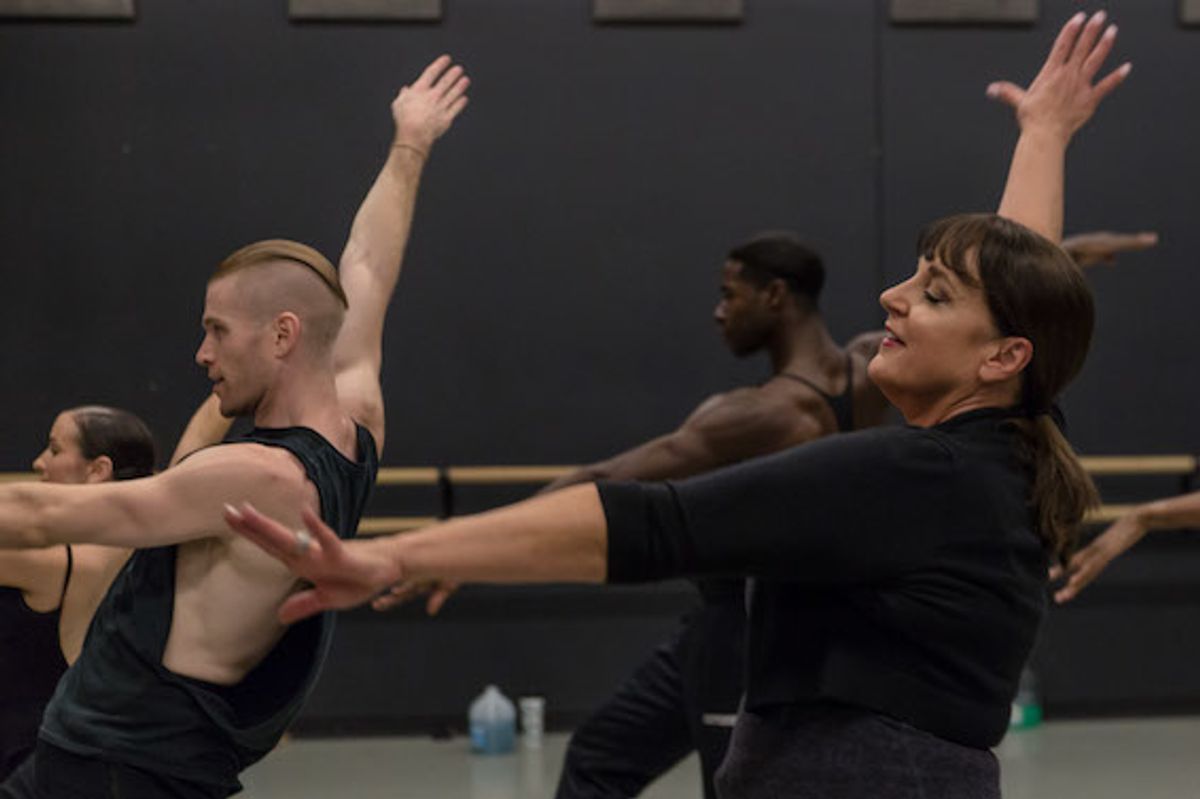
It’s no easy task to follow in the footsteps of a legend. It’s harder still to not just follow but also take the lead. Nan Giordano, daughter of jazz-dance icon Gus Giordano, has done just that, and she’s doing it with unwavering dynamism and a tenacity that has kept her father’s company, Giordano Dance Chicago, not only alive but thriving after 55 years.
Gus Giordano, a venerable founding father of jazz dance, traveled the globe teaching his iconic technique, inspired generations of dancers at his school and founded a company that became a staple in the Chicago dance scene and known around the world. Nan has been part of this company for 40 years—as a dancer, a partner to her father and now as artistic director. Today, she has cultivated an eclectic repertoire for its dancers, who have a full performance and tour schedule; she is fostering a growing education-and-outreach program; and she is overseeing the planning of a new home. “We’re not just perpetuating my dad’s name,” Nan says. “We’re elevating his legacy and building on the foundation he created.”
The Giordano organization today includes 16 dancers, eight administrative staff, plus board members and donors, who respect Nan both as the daughter of a hero of American jazz dance and a trailblazer in her own right.
The Giordano Legacy
Gus Giordano stood at the forefront of jazz technique: a dancer, a master teacher, a renowned choreographer and a company director. He studied with dance greats, including Hanya Holm, Katherine Dunham, Peter Gennaro and Alwin Nikolais, and performed on Broadway. In 1953, Gus opened the Gus Giordano Dance School in Evanston, Illinois, with his wife Peg. In 1963, his company was born: five dancers who toured the country in a station wagon. It was one of the first to bring jazz dance to the concert stage. Gus’ drive was tireless, and his technique was precise: a strong core, isolations of the hips and shoulders, energetic jazz hands, a regal, lifted chin and a piercing gaze.
“The company created a niche in the dance field,” says Glenn Edgerton, artistic director of Hubbard Street Dance Chicago. “This form of jazz is completely unique to Gus Giordano, and its high energy and high impact has always been infectious.”
In 1990, Gus started the Jazz Dance World Congress, a five-day gathering of hundreds of jazz dancers, master teachers and professional companies from around the world. Seventeen congresses took place over the next 24 years—both in numerous U.S. cities and in countries including Mexico, Costa Rica, Germany and Japan.

Photo by Quinn Wharton
Raised to Reign
Nan grew up by her father’s side, witnessing his company’s rise. “I experienced the world with my dad,” she says. “I loved the vibrancy and excitement of dance. And I was really proud. He was an incredibly charming man who was so handsome, warm and friendly. Everyone idolized him.”
She trained extensively with her father, often sticking to the back of his class so others wouldn’t guess she was anyone special. And after college, she joined his company. She watched her father demonstrate strict leadership in the company, while her mother had her finger on the pulse of the studio, running the administrative side. “I learned young that I loved both worlds—the artistry and the business,” says Nan. “At heart, I am the combination of both my parents.”
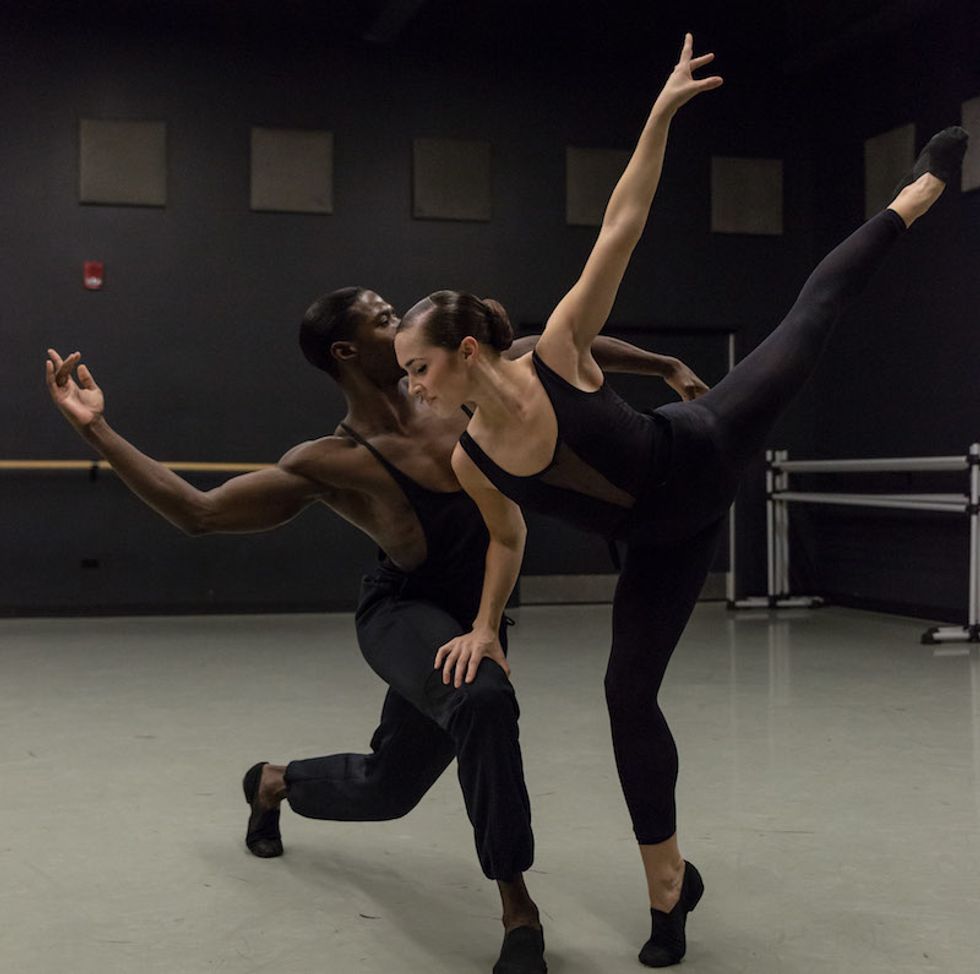
Devin Buchanan and Linnea Stureson. Photo by Quinn Wharton
After an injury sidelined Nan’s dance career in 1985, she embraced her administrative instinct. While Gus remained the company’s leader, Nan began to take on more responsibility, focusing on bringing the company structure up to not-for-profit standards and establishing a board of directors. “Oh, I was scared at first,” she says. “He was strict, and he had this green vein on his forehead that would get prominent when he was upset. There has been a lot of growth since then to become a leader.”
Gradually, Gus stepped back, letting Nan take the lead, and officially named her artistic director in 1993. With her never-quit attitude and contagious energy, she was a natural. “Gus’ presence commanded respect, and that’s exactly what Nan does now,” says choreographer Ray Leeper, who trained with Gus as a teenager. “She’s a taskmaster. She’s exuberant. She’s passionate. And she demands excellence.”
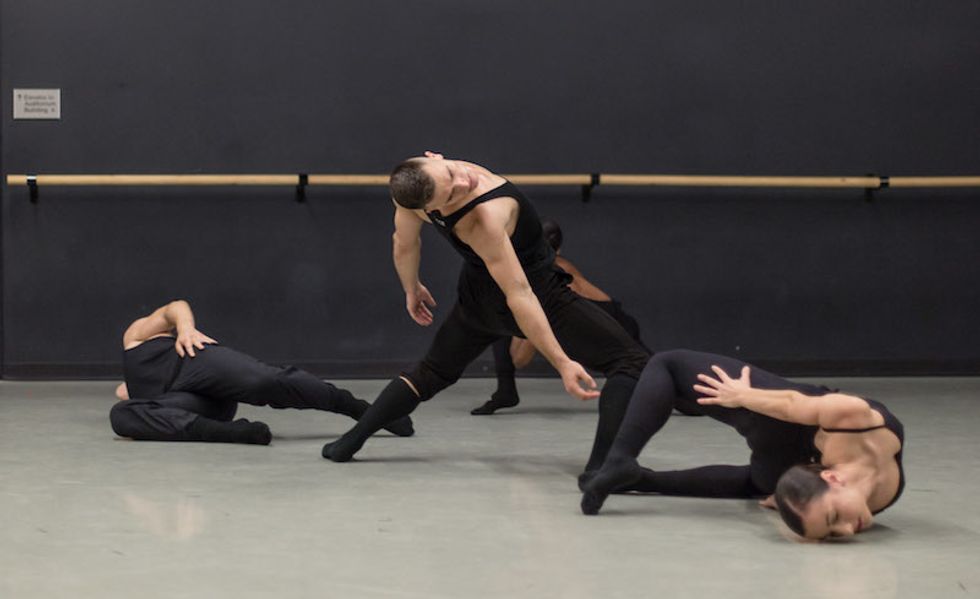
Ryan Galoway, Jacob Frazier, Ari Israel (obscured), Mariterese Altosino. Photo by Quinn Wharton
Life After Death
Gus taught for the last time at age 81, at the 2004 Jazz Dance World Congress in Costa Rica, and his health rapidly declined over the next few years. Still, he watched every performance and offered Nan counsel and advice until he passed away in 2008. Nan’s world was shaken. “Everywhere I looked, he was there,” she says. “Then there were times I’d have to leave rehearsal because it was too much. I lost my dad, but I also lost my partner, my advisor and my mentor. His soul was my soul.”
There were other personal and professional struggles that came within a few years: Nan and her husband divorced in 2008; in 2009, GDC executive director Ben Hodge stepped down; and in 2011, the school and company moved to separate locations. Nan took on the added challenges with gusto, stepping in as both executive and artistic director, and the company didn’t skip a beat.
“If anything, I think the understanding of what the organization was built on and our responsibility to continue his legacy was made stronger after that loss,” says Maeghan McHale, who’s been dancing with GDC since 2007. “We were on tour in Hawaii when Gus died, and we wanted to come home. Nan said, ‘No, stay. It’s what my father would have wanted.'”

“We want our audiences to not just see that the dancers are good, but to also feel something,” says Nan. Photo by Quinn Wharton
Michael McStraw came on board as executive director in 2010, and Nan credits him with the organization’s continued strength and growth—most notably, a doubling in its financial size in the past seven years. With Nan dedicated to the artistic side and with more financial flexibility, she focused on growing her father’s dream of being a true repertory company. She brought choreographers on board who truly expanded the meaning of the word “jazz,” including Ray Leeper, Rennie Harris, Alexander Ekman, Liz Imperio, Davis Robertson, Peter Chu and Ray Mercer. “Nan builds a true connection with people she brings into the company,” says Mercer, who first choreographed for GDC in 2015. “Ever since we first spoke on the phone, she’s felt like family.”
The Dancers
GDC presents performance series at The Harris Theater in the spring and fall, and one in the summer at the Auditorium Theatre, and frequently tours for performances and residencies (this year to Indiana, Michigan, Alabama, Iowa and Tennessee). They’ve maintained a structure of five women and five men since before Gus’ death—currently adding two Giordano II dancers and four “performing associates,” a transition step between Giordano II and GDC. Nan expects dancers to rise through the ranks, so she pairs each Giordano II member with a mentor from the main company to guide them.
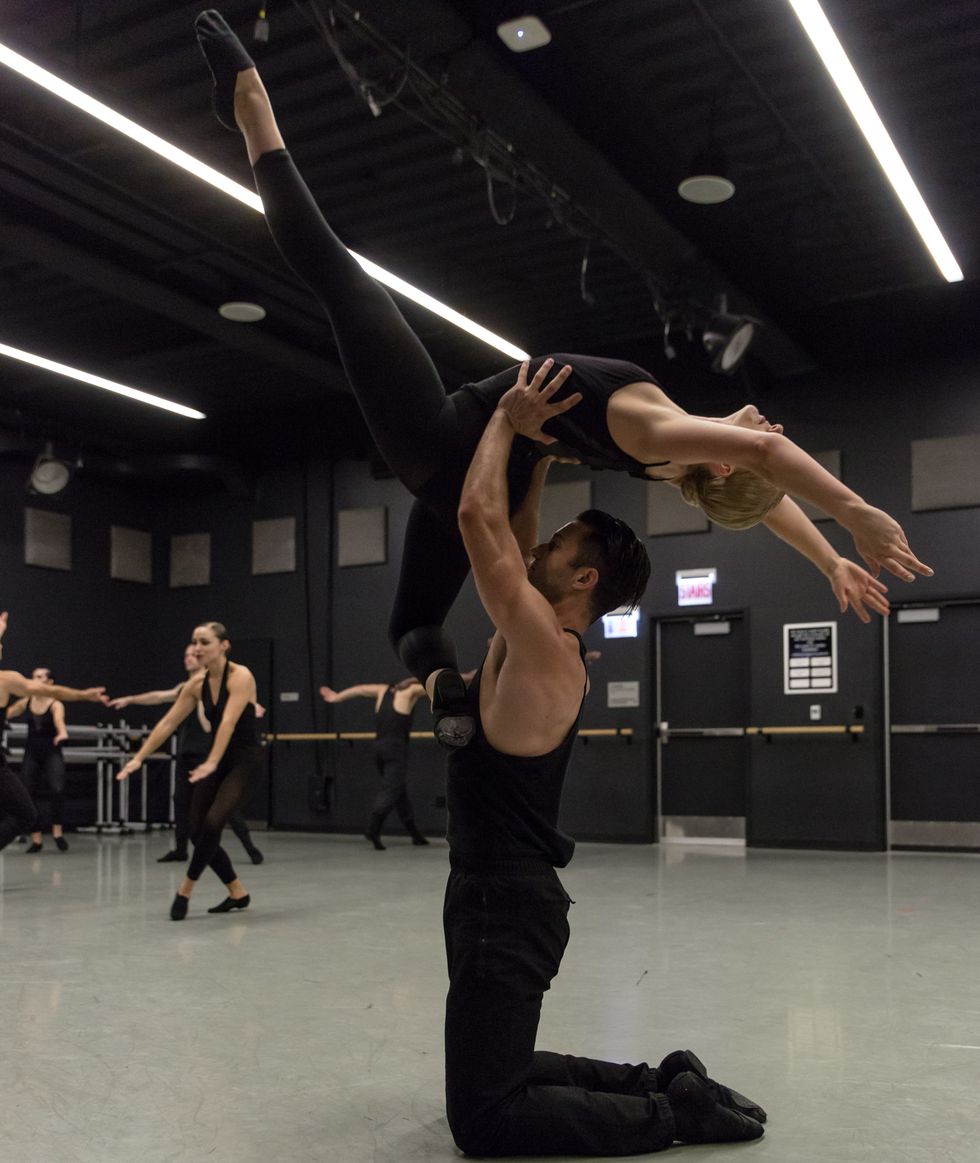
Zachary Heller lifts Katie Rafferty. Photo by Quinn Wharton
Nan carefully chooses dancers who she thinks can handle both the technical difficulty of the repertory—with a strong base in jazz, ballet and modern—and the family-like dynamic she cherishes. She also appreciates dancers with college degrees, which she says adds a level of maturity. “We hire dancers based on so much more than just skill,” she says. “I ask myself, ‘What are they like as people?'”
As a result, the dancers are versatile and strong as individuals, but also work as a captivating and dynamic unit. “We want our audiences to not just see that the dancers are good, but to also feel something,” Nan adds. “There’s so much darkness in the world, but the crazier it gets, the more it propels me. I want people to leave our performances feeling good. We strive for an experience of warmth.”
Education and Outreach
Even without a brick-and-mortar school, Nan remains passionate about training the next generation of Giordano dancers, so in recent years, she’s increased her reach as a teacher, traveling to conventions and teaching master classes internationally.
Nan’s classes are deeply rooted in Giordano technique, but they are also playful, offering opportunity to develop improvisational skills. “After 11 years, Nan still surprises me by pulling combinations out of the vault that I’ve never seen before,” says McHale about Nan’s weekly company class.
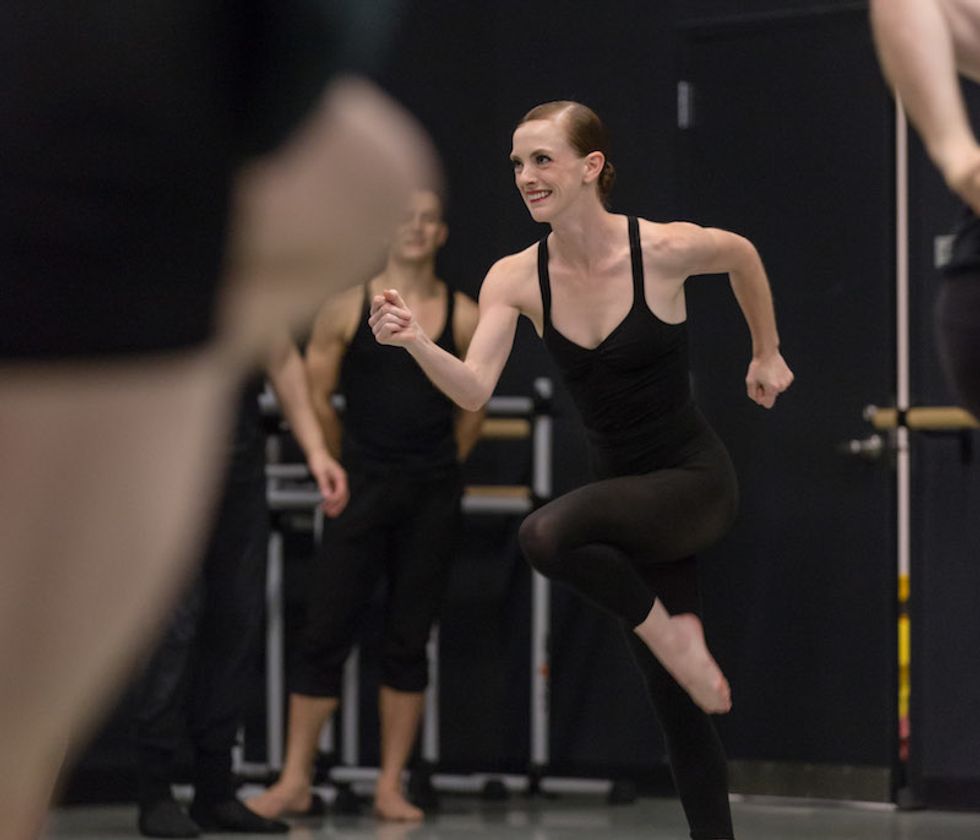
Natasha Overturff Denny. Photo by Quinn Wharton
GDC’s intensive six-day summer workshop offers teens, college students and pre-professional dancers the chance to be immersed in Giordano technique. And last year saw the start of a college mentorship program, which allows college students to be paired with company dancers for a full year, receive full scholarships to the summer workshop and get a behind-the-scenes look at the company. “College graduates often haven’t seen what company life really looks like,” says artistic programs manager and former GDC dancer Cesar Salinas. “This is something I wish I’d had as a young dancer.”
Another program, called The Giordano Experience, invites studio and high school groups to spend a day with the company. Dancers take class with Nan, chat with company members and watch rehearsal. When GDC tours, it brings aspects of The Giordano Experience to local high school and college dancers. Nan often teaches during these company residencies, including a trip this year to Butler University’s dance department. (Her son Keenan, not a dancer, is currently a student there.) “Even dancers in ballet companies need more than just beautiful technique,” she says. “They need to be able to move.”
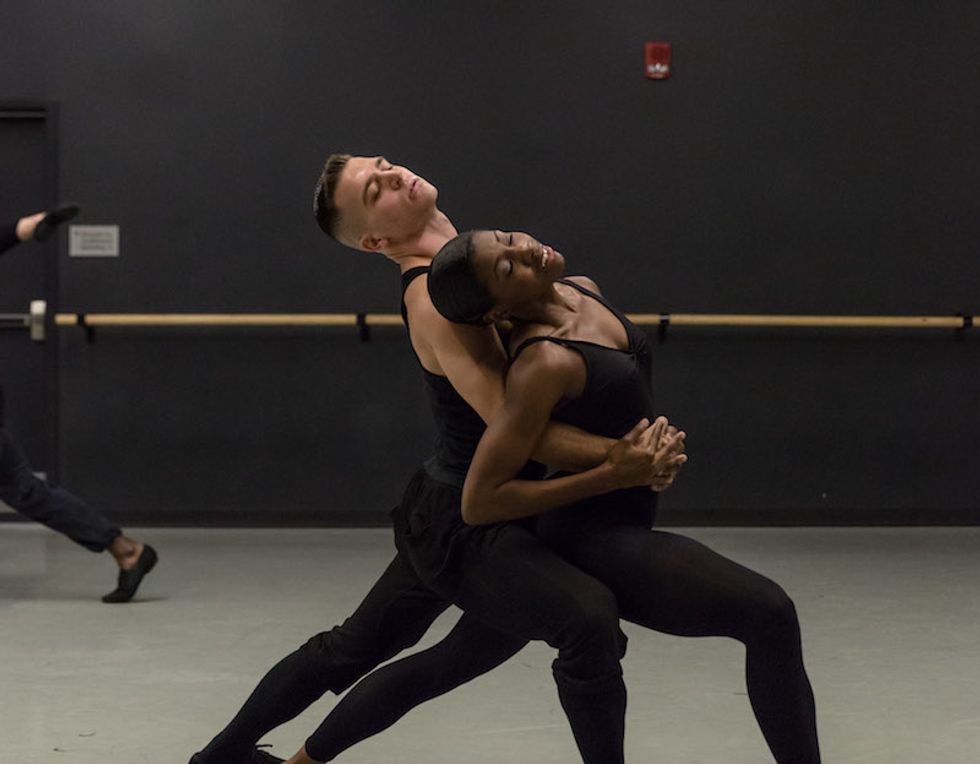
Jacob Frazier and Ari Israel. Photo by Quinn Wharton
Community outreach has become a staple of the Giordano mission. In the spring, Nan keeps the company’s touring schedule light to facilitate Jazz Dance/Science and Health, an eight-week movement-based curriculum for fourth- and fifth-grade science classes at four underserved Chicago public schools.
Nan also hopes for a return of the Jazz Dance World Congress in the near future, which was last held in 2012 in partnership with Point Park University. But her focus recently has been the five-year development of the Nan Giordano Certification Program, a training curriculum for teachers in Gus’ iconic technique.
Sweet Home
GDC has lived a nomadic life since moving away from its former suburban home more than five years ago, with the company renting studios throughout Chicago, and the administration in a small office space. They’re currently in the process of purchasing a permanent home, thanks to an individual donor: the Hermon Baptist Church in the Lincoln Park neighborhood of Chicago.
“We’ve persevered for 55 years, and we deserve a home,” says Nan, who hopes the building will house studios for rehearsal and classes, office space and a black-box theater for informal showings, but the organization is only at the beginning stages of developing a timeline and financial strategy for the move. “We’re going for the gold, but the scope of it will depend on how much money we can raise,” Nan says. “My goal is to have a place where the Giordano technique thrives, where it’s known throughout the world that this is where jazz dancers go to study.”
Her confidence in the vitality of jazz dance is palpable, her excitement contagious and her mission clear. “Jazz dance is alive, and I need to be one of the voices that carries it out into the world,” she says. “This is not fad. This is foundation.”
As a reminder of the responsibility of carrying on her father’s dream, Nan keeps a few letters from him framed in her office. One of those notes, dated December 12, 2000, simply says, “Nan, What a pleasure for me to have my daughter as my legacy. You are doing a wonderful + beautiful + talented take over. I love you, Dad.”
